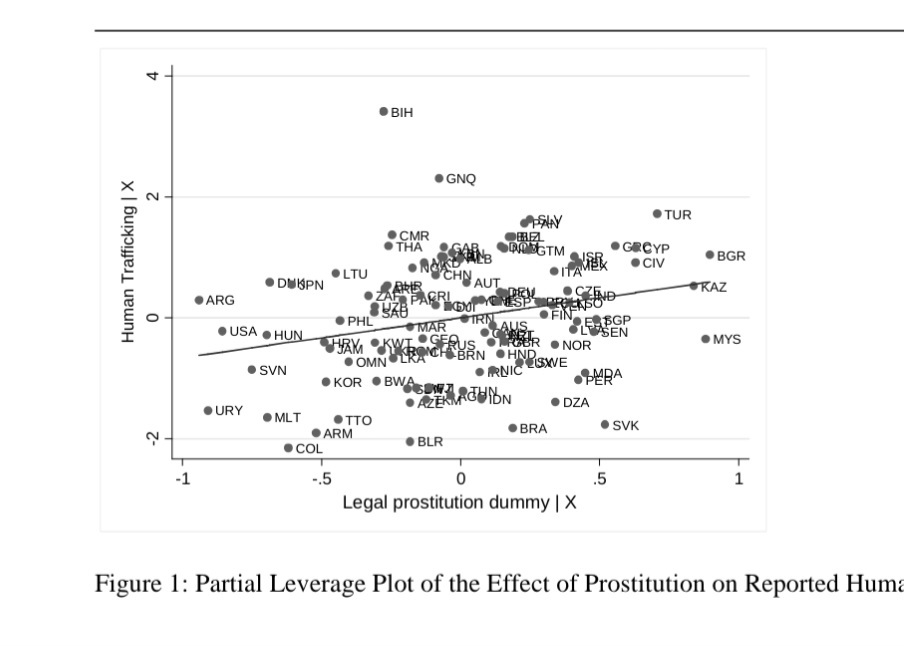It's not the label that makes something a graph. Including tables and charts that are data but do not show a relationship into the things that support your conclusions is incorrect. You claimed to have a preponderance of evidence where what you had was one incorrectly interpreted graph. Do you understand why I called you out on that?
So one singular graph?
multiple graphs
Maybe you got some other things wrong, too.
If you can't even count, I don't see a reason to listen to anything else you have to say on intelligent. There are two graphs in the paper you cited, the one that I've posted in another comment (figure 1) and a pie chart of prostitution regimes in appendix C. The former shows some places have the substitution effect overshadow the scale effect and it some places the opposite occurs. The latter is a pie chart that doesn't have a dependent variable.
No, we've been over this, it does not show a direct increase. Average is the word they used. If you keep repeating the same wrong thing, it doesn't suddenly become correct.
But it lost its panhandle. Sadge.
No, I did not. I know your reading comprehension isn't the best, but come on, or my comments are there to go back to and reread. You can even quote me. Go ahead. Tell me where I addressed trafficking and not your misinterpretation of the source.
Yikes. Get upset that your source and interpretation suck? Don't reflect, just accuse them of something.
I already mentioned the problems with your source is another comment, but now I'm going to address the "science".
First up, science doesn't run on certainty. If you had actually read the paper, you might have noticed this sentence:
Therefore, the true number of human trafficking victims is unknown (Belser, de Cock & Mehran, 2005).
Science also does not take place in a vacuum; it is political. The statistics gathered rely on political entities that have agendas. The statistics are imperfect. They even mention this:
The main limitation of the UNODC data however is that reporting will arguably depend on the quality of institutions, judicial and police effectiveness, in particular, but also on how aware the international community is about trafficking problems in a particular country.
Until you learn to read things not to prove a point, but to understand them, get science's name out of your mouth.
Ffs, read more than the abstract.
On average, countries where prostitution is legal experience larger reported human trafficking inflows.
That "on average" is doing a lot of heavy lifting. I know it's really hard to read all the way to the end, but that's where the pictures are. The regression chosen is linear, but the relationship looks to be anything but. Some countries have to substitution effect overshadow the scale effect, some see the opposite. Reducing it to legalized prostitution increases trafficking is facile at best.

Are you religious? That amount of control and mistrust seems to point to some real issues and religion is the first thing that comes to mind.
Have you ever read or seen Equus?
You already had 4 years to see. So did the US and they still chose to do it again.

To the tune of Mashed Taters